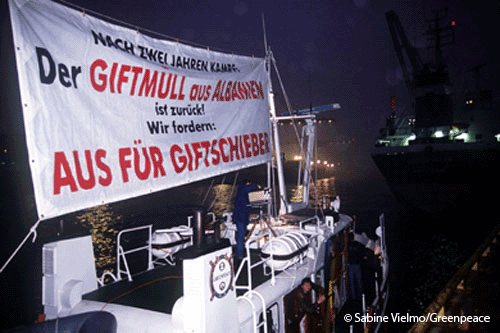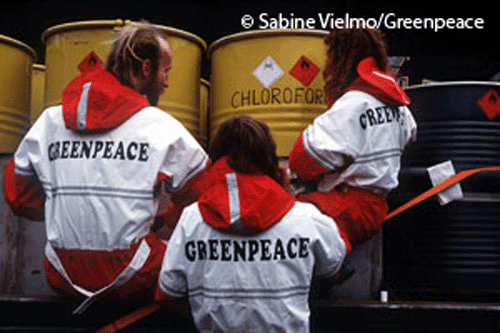
An overview of the entire project
A lot of waste and a lot of money
Prosperity in consumer societies means at the same time waste - whether prosperity waste or waste from the highly industrialized production, whether only mass or highly toxic.
In 1987 the Group of the Greens in Baden-Wuerttemberg State Parliament uncovered for the first time an export of German toxic waste after Turkey. A disposal company had so-called residual solvent, a total of 168 different toxic substances, mixed with sawdust and "alternative fuels" transformed. They were stored in a Turkish cement plant. The Turkish government responded immediately. The cargo was sent back to Germany.
A year later, in 1988, Poland opened its borders. Poland welcomed the new economic activities of Western companies. Toxic waste was among the first goods which crossed the newly opened border.

But this was only the beginning. A year later, in 1989, the Berlin Wall and the Iron Curtain fell. Previously had been loads of toxic waste brought i.e. to Africa. The transport was relatively cumbersome and expensive. But now countries beyond the former Iron Curtain attract the attention of racketeers of garbage. Waste, which would have been expensive to dispose of because of government regulations in their own countries, could be dumped cheaply in countries beyond the former Iron Curtain: solvents, used oil, old pesticides, paint and paint residues, metallurgical slags, galvanic sludges, catalysts, sewage sludge, asbestos waste, contaminated railroad ties, batteries, car shredder transformers and capacitors, etc. - basically all what one wanted to get rid of.
Greenpeace did not accept this dangerous cheap version of the garbage disposal - the environmentalists do not just care about the environment at home, but look at the problem globally.
Greenpeace launched a major campaign, especially in Germany. At that time, German Environment Minister Klaus TOEPFER (CDU) touted environmental protection - allegedly - as a major issue. Greenpeace had to work hard to raise public awareness of the toxic waste problem. In the end, their efforts were successful: the Basel Convention was signed.
How Greenpeace finally defeated the export of toxic waste export, what was their concept and whether or how it worked, check out the CHRONOLOGY OF A LONG BUT SUCCESSFUL CAMPAIGN.
The reconstruction of one of their activities: 2,000 TONS OF OBSOLETE PESTICIDES: A TRIP TO HERMANNSTADT / SIBIU AND BACK.
Finally - at the end of the Greenpeace campaign – an agreement was signed by the OECD countries. Regulations of the BASEL CONVENTION can be studied here.

The Greenpeace campaign against toxic waste export was designed, arranged, organized and conducted by COUNT ANDREAS BERNSTORFF.
His strategy is documented in A REPORT FROM A DETECTIVE AGENCY - SPECIALIZED IN THE ISSUE OF TOXIC WASTE.
Presented is also another report: A THREE-WEEK UNDERCOVER INVESTIGATION. A researcher was looking undercover for the next scheduled toxic waste export, because Greenpeace planned to stop the cargo at the border - in the presence of the media.
If you want to call this story, or link directly, you can easily do this with the link www.ansTageslicht.de/Greenpeace+Undercover
(JL)
Online am: 19.10.2016
Inhalt:
How Greenpeace successfully fought against toxic waste exports
- An overview of the entire project
- Chronology of a long but successful campaign
- 2.000 tons of obsolete pesticides: A trip to Hermannstadt / Sibiu and back
- Count Andreas von Bernstorff - the Greenpeace campaigner
- Frank BRENDEL - Journalist
- A report from a detective agency - specialized in the issue of toxic waste
- A three-week undercover investigation
